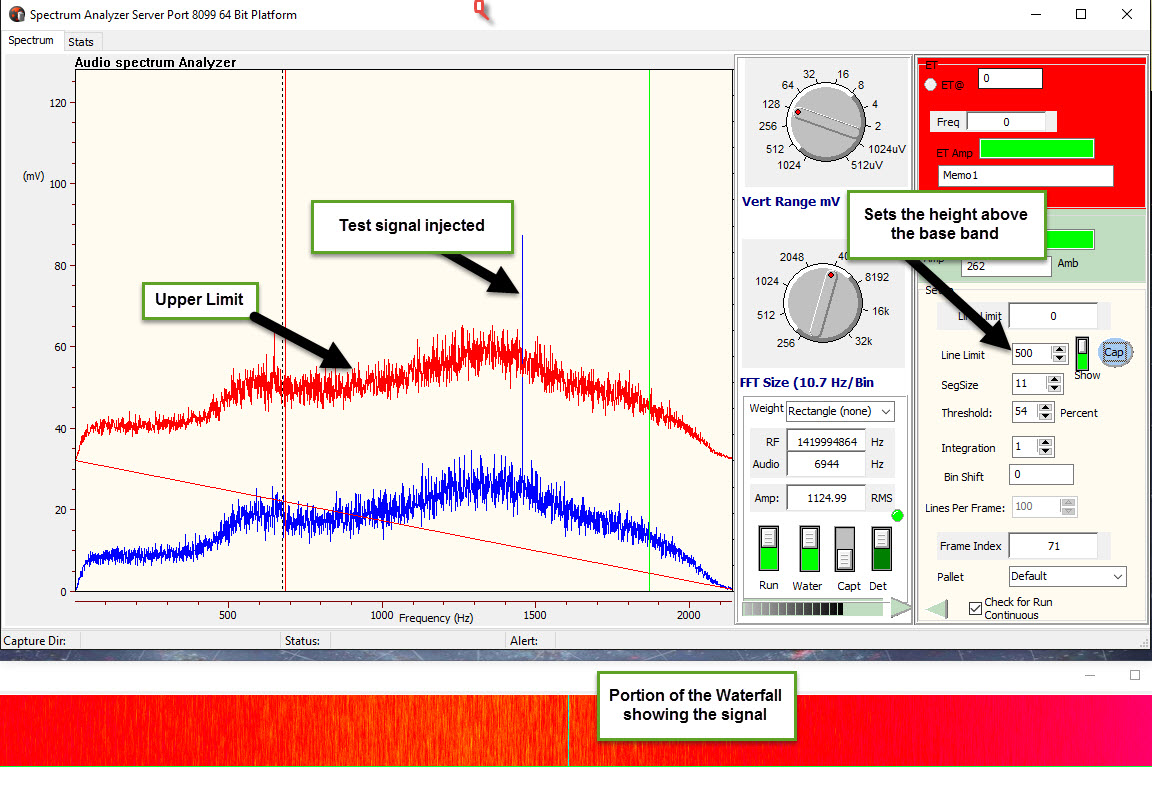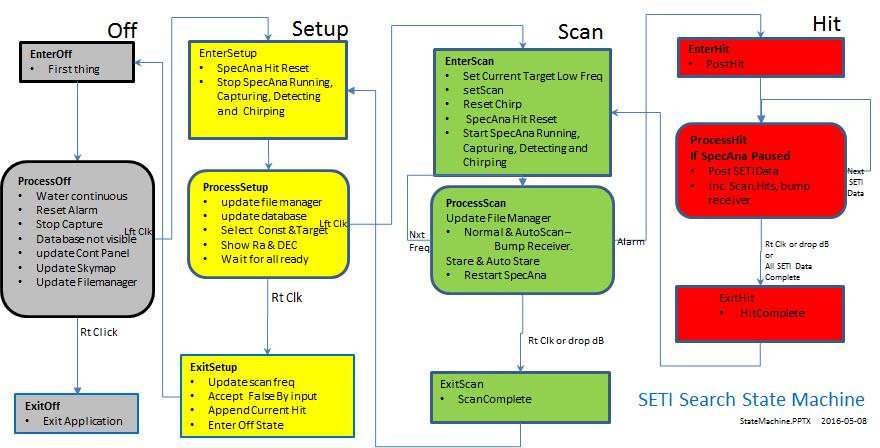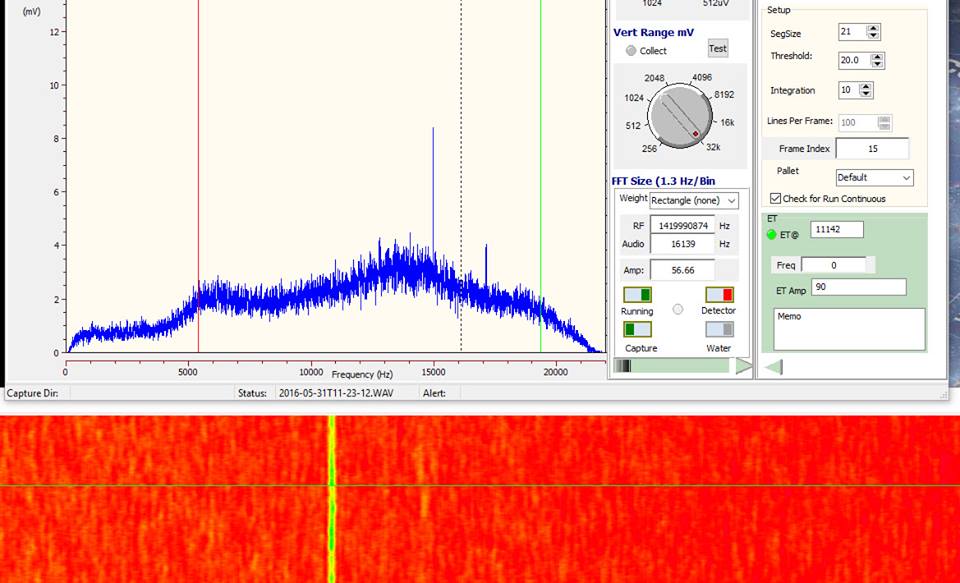Volume 10
Chapter 65
366 - New Discriminator 2016-06-14
There are a vast number of signals in the area of the spectrum that SETI Net scans. So far, 100% of them are not ET. The problem is that they eat up a large percentage of the search time detecting them, categorization, transmitting the data to the server, and then finding ways to falsify them. Discriminators are a way to speed up the process.
These are the discriminators now used for the falsification process
Antenna Movement -When a signal is detected, it is falsified by moving the antenna off-axis. If the signal does not disappear, then it's not entering the system through the dish/horn and can be falsified. Manual process
Signal Doppler - If a signal does not show signs of Doppler shift due to the rotation of the Earth it is on the surface or in orbit and can be falsified. This is an Automatic process
Signal Width - Any signal from ET is assumed to be narrowband, in the order of 1 Hz wide. If a signal is wider than this, by an arbitrary amount, it can be falsified. This is a Manual process.
To this list, I am adding a new discriminator.
Signal Amplitude - A signal from ET is expected to be low amplitude due to the great distance from the Earth. If a signal reaches the system and is very high amplitude. It can be falsified.
How high is open to estimation. I asked Paul Shuch of the SETI League for help with this. The following is a dialogue between me and Dr. Shuch:
SETI Net: I've been working away on my SETI software and have it to the point where it can dig out a narrow band signal from the audio of my receiver (see the attached pix) with good reliability.
When I come across a very loud carrier the system records it, as it should, but I would like to discriminate against signals that are too loud to possibly be from ET. The question is:(drum roll please) What should the cut off point be. Do you think its should be like 6 dB above the surrounding bins?(I can do that) or more like 20 dB? What is your feeling?
Dr. Shuch: Let's face it - what we're looking for is the next Wow. The OSU Wow! Signal was something like 30 times the voltage output of the mean bin value. That's roughly 23 dB. You're probably 6 to 10 dB less sensitive than Big Ear, so a reasonable upper limit would be something like13 to 17 dB above mean bin noise.
SETI Net: That sounds doable. My system is capable of detecting a carrier, like the one in the picture but much lower in amplitude, and then reporting the amplitude of that hit. I can modify the software so that it calculates the average bin amplitude on both sides of the hit and uses that for the discriminator. That would even add another 'filter'. A lot of the signals I come across are rather wide (20 - 30 Hz) and my assumption is that an ET beacon would be in the Hz range. So if I look on both sides of a 20 Hz signal it would reduce the possibility of a false positive.
The realization of this discriminator is a bit difficult but this is the result:

From this picture you can see that an injected test signal is not flagged as a hit by the system because it is higher in amplitude than the Upper Limit. This is the discriminator I was looking for.
The height of the Upper Limit above the base is currently in arbitrary units (this example shows 500) but I should be able to relate this to dB as Paul suggested.
The Upper Limit is set by capturing a single line output from the FFT and buffering it. The position of this line is set by the spin edit on the right side (pointed to by the arrow).
The test signal is injected at the audio level using the SETI Net Tone Generator.
The Tone Generator and the Spectrum Analyzer (64 bit Windows only) my be downloaded here:
365 - Latest State Marchine 2016-05-18

Your welcome to download this in its native form (Power Pont pptx)

